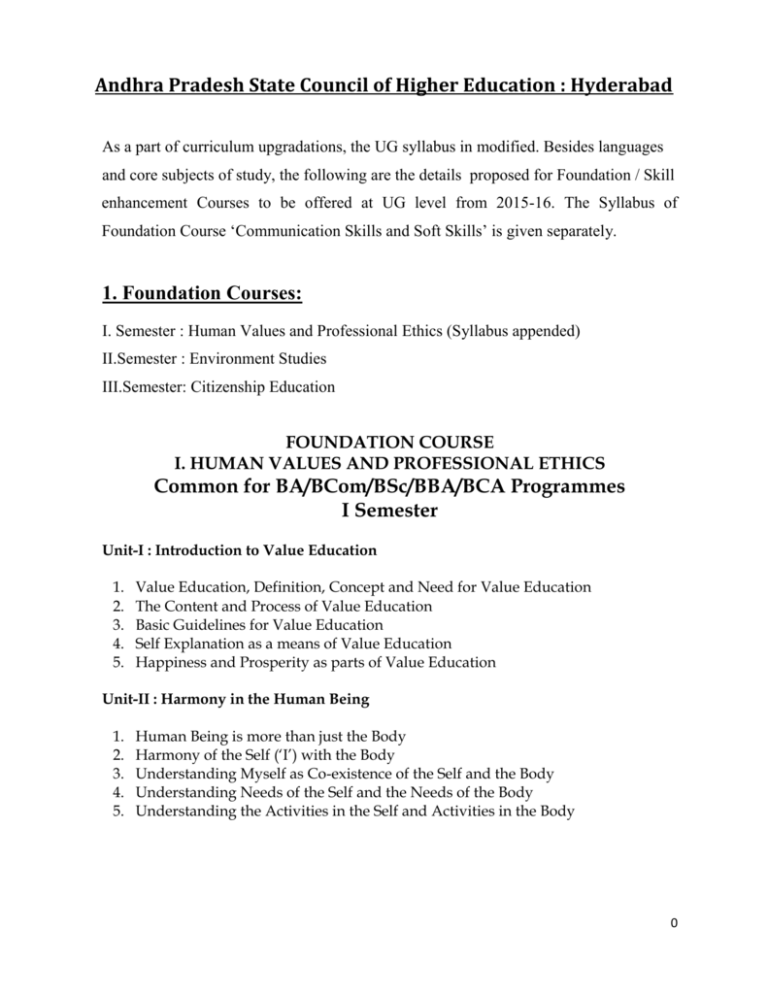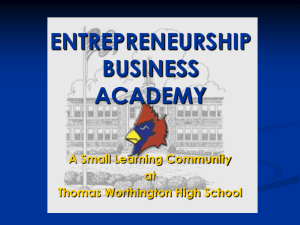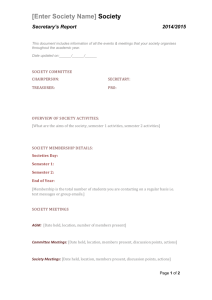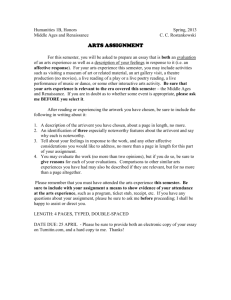
Andhra Pradesh State Council of Higher Education : Hyderabad
As a part of curriculum upgradations, the UG syllabus in modified. Besides languages
and core subjects of study, the following are the details proposed for Foundation / Skill
enhancement Courses to be offered at UG level from 2015-16. The Syllabus of
Foundation Course ‘Communication Skills and Soft Skills’ is given separately.
1. Foundation Courses:
I. Semester : Human Values and Professional Ethics (Syllabus appended)
II.Semester : Environment Studies
III.Semester: Citizenship Education
FOUNDATION COURSE
I. HUMAN VALUES AND PROFESSIONAL ETHICS
Common for BA/BCom/BSc/BBA/BCA Programmes
I Semester
Unit-I : Introduction to Value Education
1.
2.
3.
4.
5.
Value Education, Definition, Concept and Need for Value Education
The Content and Process of Value Education
Basic Guidelines for Value Education
Self Explanation as a means of Value Education
Happiness and Prosperity as parts of Value Education
Unit-II : Harmony in the Human Being
1.
2.
3.
4.
5.
Human Being is more than just the Body
Harmony of the Self (‘I’) with the Body
Understanding Myself as Co-existence of the Self and the Body
Understanding Needs of the Self and the Needs of the Body
Understanding the Activities in the Self and Activities in the Body
0
Unit-III : Harmony in the Family and Society and Harmony in the Nature
1. Family as a basic unit of Human Interaction and Values in Relationships
2. The Basics for respect and today’s Crisis : Affection, Care, Guidance, Reverence,
Glory, Gratitude and Love
3. Comprehensive Human Goal : The Five dimensions of Human Endeavour
4. Harmony in Nature : The Four orders in Nature
5. The Holistic Perception of harmony in Existence
Unit-IV : Social Ethics
1.
2.
3.
4.
5.
The Basics for Ethical Human conduct
Defects in Ethical Human Conduct
Holistic Alternative and Universal order
Universal Human Order and Ethical Conduct
Human Rights violation and Social Disparities
Unit-V : Professional Ethics
1.
2.
3.
4.
5.
Value Based Life and Profession
Professional Ethics and Right Understanding
Competence in Professional Ethics
Issues in Professional Ethics – The Current scenario
Vision for Holistic Technologies, Production System and Management Models
Reference Books :
1. A.N.Tripaty, Human Values, New Age International Publishers, 2003
2. Bajpai.B.L., Indian Ethos and Modern Management, New Royal Book Co.,
Lucknow, Reprinted, 2004
3. Bertrand Russell, Human Society in Ethics and Politics
4. Corliss Lamont, Philosophy of Humanism
5. Gaur.R.R., Sangal.R, Bagaria.G.P., A Foundation Course in Value Education,
Excel Books, 2009
6. Gaur.R.R., Sangal.R, Bagaria.G.P., Teacher’s Manual, Excel Books, 2009
7. I.C.Sharma, Ethical Philosophy of India, Nagin & Co., Julundhar
8. Mortimer.J.Adler, What Man has Made of Man
9. R.Subramanian, Professional Ethics, Oxford University Press
10. Text Book for Intermediate Ethics and Human Values, Board of Intermediate
Education & Telugu Academy, Hyderabad
11. William Lilly, Introduction to Ethics, Allied Publishers
1
FOUNDATION COURSE
ENVIRONMENTAL STUDIES
Common for BA/BCom/BSc/BBA/BCA Programmes
II Semester
Unit-I : Natural Resources
The Multidisciplinary nature of Environmental Studies. Definition, scope and
importance. Need for public awareness. Renewable and non-renewable resources:
Natural resources and associated problems
Forest recourses: Use and over-exploitation, deforestation, case studies.
Timber extraction, mining, dams and their effects on forests and tribal people
Water resources: use and over – utilization of surface and ground
water,
floods, drought, conflicts over water, dams- benefits and
problems
Mineral resources: Use and exploitation, environmental effects of
extracting and using mineral resources, case studies
Food resources: World food problems, changes caused by agriculture and
overgrazing, effects of modern agriculture, fertilizer- pesticide
problems,
water logging, salinity, case studies
Energy resources Growing energy needs, renewable and non-renewable
energy sources, use of alternate energy sources, case studies
Land resources: Land as resources, land degradation, man induced
landslides, soil erosion and desertification
a. Role of an individual in conservation of natural resources
b. Equitable use of resources for sustainable lifestyles
Unit-II : Ecosystems, Biodiversity and its conservation
Concept of an ecosystem
Structure and function of an ecosystem
Producers, consumers and decomposers
Energy flow in the ecosystem
Ecological succession
Food chains, food webs and ecological pyramids
Introduction, types, characteristic features, structure and function of
the
following ecosystem:- Forest ecosystem, Grassland ecosystem,
Desert
ecosystem, Aquatic ecosystems (ponds, streams, lakes, rivers, oceans, estuaries)
Introduction – Definition genetic, species and ecosystem diversity
Biogeographically classification of India
Value of biodiversity: Consumptive use, productive use, social, ethical
aesthetic and option values
Biodiversity at global, National and local levels
India as a mega – diversity nation
Hot-spots of biodiversity
Threats to biodiversity habits loss, poaching of wildlife, man wildlife
conflicts
Endangered and endemic species of India
2
Conservation of biodiversity: In-situ and Ex-situ conservation of biodiversity
Unit-III : Environmental Pollution
Definition
Causes, effects and control measures of :a. Air pollution
b. Water pollution
c. Soil pollution
d. Marine pollution
e. Noise pollution
f. Thermal pollution
g. Nuclear pollution
Solid waste management: Causes, effects and control measures of urban and
industrial wastes
Role of individual in prevention of pollution
Disaster management: floods, earthquake, cyclone and landslides
Unit-IV : Social Issues and the Environment
From Unsustainable to Sustainable development
Urban problems related to energy
Water conservation, rain water harvesting, watershed management
Resettlement and rehabilitation of people; its problems and concerns
Case
studies
Climate change, global warming, acid rain, ozone layer depletion,
nuclear accidents and holocaust, case studies
Wasteland reclamation, Consumerism and waste products
Environment protection Act
Air (Prevention and control of Pollution) Act
Water (Prevention and control of Pollution) Act
Wildlife Protection Act, Forest Conservation Act
Issues involved in enforcement of environmental legislation
Public awareness
Unit-V : Human Population and the Environment
Population growth , variation among nations
Population explosion- Family welfare Programme
Environment and human health
Human Rights
Value Education
HIV/AIDS
Women and Child Welfare
Role of Information Technology in Environment and human healt
Reference Books :
1. Environmental Studies (for Non-Engineering Students) by Prof. B.Sudhakara
Reddy, Prof. T.Shivaji Rao, Prof. U.Tataji and Prof. K.Purushotham Reddy,
published by Maruthi Publications, Guntur. (prescribed by APSCHE)
2. Environmental Studies by Dr.M.Satyanarayana, Dr.M.V.R.K.Narasimhacharyulu,
Dr.G.Rambabu and Dr.V.Viveka Vardhani, Published by Telugu Academy,
Hyderabad.
3. Environmental Studies by R.C.Sharma, Gurbir Sangha, published by Kalyani
3
Publishers.
4. Environmental Studies by Purnima Smarath, published by Kalyani Publishers.
FOUNDATION COURSE
III CITIZENSHIP EDUCATION
Common for BA/BCom/BSc/BBA/BCA Programmes
III Semester
Unit – I : Citizen and citizenship – Role of the Citizen in the State and Society.
Unit – II : Indian Constitution and Citizenship – Social Economic and Political Justice
– Right to Information Act – Features - Applications and Benefits - (A supreme
Expression of Popular Sovereignty).
Unit – III : Human Rights and Fundamental Rights – Consumer Rights and Protection
– (Consumer Protection Act 1986)
Unit – IV : Fundamental Duties of a Citizen.
Unit – V : Humanitarianism and Citizenship – Social Equality – Responsibility for the
society and Family – Life and living , the path for Human Excellence.
BOOKS SUGGESTED
1.
2.
3.
4.
Indian Constitution ( Bharata rAjyA Mgamu) Telugu Academy.
SamAjam – vivAhaM kuluMbasaMhaMlu – Telugu Academy.
Prof. H. Lajpath Roy -2010 – Consumer Protection – Role of Universities.
Right To Information Act. Govt. Publication.
4
2. Skill enhancement Courses:
a) I Semester
: CSS-1 : Communication and Soft Skills-1
III Semester : CSS-2 : Communication and Soft Skills-2
IV Semester : CSS-3 : Communication and Soft Skills-3
The Syllabus of Foundation Course ‘Communication Skills and Soft Skills’ is given
separately.
COMMUNICATION SKILLS AND SOFT SKILLS
(Spread over Three Semesters: 1, 3, and 4)
The course helps the students improve their four skills -- listening, speaking, reading,
and writing -- and also initiates them into the fifth skill, "thinking" in English. It also
helps them acquire knowledge of soft skills.
SEMESTER - 1
COMMUNICATION SKILLS AND SOFT SKILLS-1(CSS 01)
Duration: A minimum of 50 Hours (including practice)
Examination: 45-minute Mid-Exam at the end of 07 weeks for 25 marks and another at
the end 14 weeks. The average of the two mid exams be taken for 25 marks as Internal
Two-and-a-half-hour End-Exam for a maximum of 75 marks
COURSE CONTENT
Unit I: Pronunciation-1 (10 Hours)
1. The Sounds of English: Vowels
2. The Sounds of English: Consonants
3. Common Pronunciation Problems for Indian Learners of English
Unit II: Pronunciation-2 (06 Hours)
1. The Syllable
2. Word Accent
3. Accent and Rhythm in Connected Speech
4. Intonation
5
Unit III: Grammar (14 Hours)
A very important component of communicative competence is grammatical competence,
which most of our students lack in spite of having been taught grammar for at least ten
years. Since English is a predicate-oriented language, the following items are discussed in
detail:
1. The Verb Phrase
i. Stative Verbs and Dynamic Verbs
ii. Transitive Verbs and Intransitive Verbs
iii. Operators
2. Meanings of Modals
3. Tense (Present and Past) and Aspect
4. The Several Possibilities for Denoting Future Time
5. The Seven Basic Sentence Types
6. Subject-Verb Concord
Unit IV: Listening Skills (08)
1. The Importance of Listening
2. Types of Listening
3. Barriers/Obstacles to Effective Listening
4. Strategies for Effective Listening
Unit V: Reading Skills (12 Hours)
1. Comprehension
2. Skimming
3. Scanning
4. Intensive Reading
5. Extensive Reading
Sources
Commissionerate of Collegiate Education, Government of Andhra Pradesh (2015)
JKC -Communication Skills and Soft Skills: Student's Book
Sethi, J., and P.V. Dhamija (1999) A Course in Phonetics and Spoken English
New Delhi: Prentice-Hall of India
Daniel Jones (2011) English Pronouncing Dictionary (18th Edition) Ed. Peter Roach, Jane
Setter, and John Esling
6
Quirk, Randolph and Sydney Greenbaum (1973) A University Grammar of English.
Harlow: Longman. Chapters 2, 3, and 7
White, Goodith (2010) Listening (Resource Book for Teachers). Oxford University
Press
Nageshwar Rao and Rajendra P. Das (2009) Communication Skills. Mumbai: Himalaya
Publishing House
Burton, S.H. (1983) Mastering English Language. The Macmillan Press Limited
Chapter 3: Comprehension
Grellet, Francoise (2007) Developing Reading Skills. Cambridge University Press
Roberts, Rachael, Joanne Gakonga, and Andrew Preshous (2004) IELTS Foundation:
Student’s Book. Oxford: Macmillan Education
Roberts, Rachael, Joanne Gakonga, and Andrew Preshous (2004) IELTS Foundation:
Study Skills. Oxford: Macmillan Education
SEMESTER - 3
COMMUNICATION SKILLS AND SOFT SKILLS-2 (CSS 02)
Duration: A minimum of 50 Hours (including practice)
Examination: As mentioned above
COURSE CONTENT
Unit I: Vocabulary Building (08 Hours)
1a. Prefixes and Suffixes
1b. Conversion
1c. Compounding
2. One-Word Substitutes
3. Words Often Confused
4. Synonyms and Antonyms
5. Idioms and Phrases
6. Using the Dictionary (Advanced Learner’s Dictionary)
Unit II: Speaking Skills (12 Hours)
1. Conversation Skills
7
2. Presentation Skills
3. Interview Skills
4. Public Speaking
Unit III: Writing Skills-1 (08 Hours)
1. Spelling
2. Punctuation
3. Information Transfer
o Tables
o Bar Charts
o Line Graphs
o Pie Charts
o Flow Charts
o Tree Diagram
o Maps
4. Note-Making
o Note-making methods
o Finding key points
o Finding relevant points
o Effective note-making
Unit IV: Writing Skills-2 (10 Hours)
1. Instructions
2. Letter Writing (Formal and Informal)
3. E-correspondence
4. Resume and CV
Unit V: Soft Skills (12 Hours)
1. Positive Attitude
2. Body Language
3. Team Dynamics and Group Discussion
4. SWOT Analysis and Problem Solving
5. Netiquette
6. Emotional Intelligence
Sources
JKC -Communication Skills and Soft Skills: Student’s Book (2015) Commissionerate of
Collegiate Education, Government of Andhra Pradesh
Lewis, Norman (1978) Word Power Made Easy. New York: Pocket Books
Quirk, Randolph and Sydney Greenbaum (1973) A University Grammar of English.
Harlow: Longman: Appendix I
Fergusson, Rosalind, Ed. (1992) Dictionary of English Synonyms and Antonyms. Penguin
Cambridge International Dictionary of Phrasal Verbs
8
Cambridge International Dictionary of Idioms
Wyatt, Rawdon (2008) Check Your Vocabulary for IELTS. Oxford: Macmillan Education
Nageshwar Rao and Rajendra P. Das (2009) Communication Skills. Mumbai: Himalaya
Publishing House
Seely, John (1998) Oxford Guide to Effective Writing and Speaking. OUP
Baker, Alan (2007) Improve Your Communication Skills. New Delhi: Kogan Page
Mandal S.K. Effective Communication and Public Speaking. Mumbai: Jaico Publishing
House
Bailey, S. (2011) Academic Writing: A Handbook for International Students. London:
Routledge: 1.5 “Finding key points and note-making”
Roberts, Rachael, Joanne Gakonga, and Andrew Preshous (2004) IELTS Foundation:
Student’s Book. Oxford: Macmillan Education
Roberts, Rachael, Joanne Gakonga, and Andrew Preshous (2004) IELTS Foundation:
Study Skills. Oxford: Macmillan Education
Hedge, Tricia (1988) Writing, Resource Books for Teachers Series. OUP
Withrow, Jean (1987) Effective Writing: Writing Skills for Intermediate Students of
American English. CUP
Booher, Dianna (2007) E-Writing. Macmillan India Limited
Ramesh Gopalaswamy, and Mahadevan Ramesh (2010) The ACE of Soft Skills. Pearson
Pease, Allan, and Barbara Pease (2005) The Definitive Book of Body Language. Bhopal:
Manjul Publishing House
SEMESTER - 4
COMMUNICATION SKILLS AND SOFT SKILLS-3(CSS 03)
ACADEMIC WRITING
Duration: A minimum of 50 Hours (including practice)
Examination: As mentioned above
Course Description
The course is designed to enable undergraduate learners to cope with academic tasks to
be carried out in English across the curriculum. The course proceeds from organizing
paragraphs to writing essays. It intends to equip learners with the skills of paraphrasing
and summarizing. It also aims at making them understand and produce written texts in
English for different functions in academic settings. Since most of the students at the UG
level are expected to write assignments and essays, the course also aims at developing
English language skills for writing essays.
Course Objectives
By the end of the course, the students should be able to
write coherent paragraphs with both explicit and implicit cohesive devices;
paraphrase and summarize ideas from other sources to build into their texts;
write different types of texts based on the purpose of writing;
develop outlines for essays before developing them into essays;
write cogent essays based on the purpose.
9
COURSE CONTENT
Unit I: Organizing paragraphs (08 Hours)
Paragraph structure
Development of ideas
Linking paragraphs together
Unit II: Paraphrasing and Summarizing (12 Hours)
The elements of effective paraphrasing
Techniques for paraphrasing
What makes a good summary?
Stages of summarizing
Unit III: Functions of Academic English (12 Hours)
Defining
Describing
Comparing and contrasting
Explaining causes and effects
Classifying
Evaluating the arguments
Unit IV: Understanding essay titles and planning essays (08 Hours)
The planning process
Analyzing essay titles
Brainstorming
Essay length
Outlines
Unit V: Writing essays (10 Hours)
Types of essays
Writing introductions to essays
o Universe, Galaxy, and Star
o Writing thesis statements and overviews
Developing ideas in essays
Writing conclusions to essays
Essay specific vocabulary and Transitional words for achieving
cohesion in essays
10
Sources
Bailey, S. (2011) Academic Writing: A Handbook for International Students. London:
Routledge
Jordan, R. (1999) Academic Writing Course. London: Longman
Oshima, A. and Hogue, A. (2006) Writing Academic English. Harlow: Pearson
Longman
b) ICT Skills
II Semester : ICT-1 : Information & Communication Technology-1
IV Semester : ICT-2: Information & Communication Technology-2
SKILL ENHANCEMENT COURSE
INFORMATION & COMMUNICATION TECHNOLOGY
Paper Title : Computer Fundamentals and Office Tools
Common for BA/BCom/BSc/BBA/BCA Programmes
II Semester
Unit-I : Basics of Computers
10 Hours
Definition of a Computer - Characteristics and Applications of Computers – Block Diagram of
a Digital Computer – Classification of Computers based on size and working – Central
Processing Unit – Input, Output and I/O Devices – Primary, Auxiliary and Cache Memory
– Memory Devices – Software, Hardware, Firmware and People ware – Definition and
Types of Operating System – Functions of an Operating System – MS-DOS – MSWindows – Desktop, Computer, Documents, Pictures, Music, Videos, Recycle Bin, Task
Bar – Control Pane
Unit-II : MS-Word
10 Hours
11
Features of MS-Word – MS-Word Window Components – Creating, Editing, Formatting and
Printing of Documents – Headers and Footers – Insert/Draw Tables, Table Auto format –
Page Borders and Shading – Inserting Symbols, Shapes, Word Art, Page Numbers,
Equations – Spelling and Grammar – Thesaurus – Mail Merge
Unit-III : MS-PowerPoint
10 Hours
Features of PowerPoint – Creating a Blank Presentation - Creating a Presentation using a
Template - Inserting and Deleting Slides in a Presentation – Adding Clip Art/Pictures Inserting Other Objects, Audio, Video - Resizing and Scaling of an Object – Slide
Transition – Custom Animation
Unit-IV : MS-Excel
10
Hours
Overview of Excel features – Creating a new worksheet, Selecting cells, Entering and editing
Text, Numbers, Formulae, Referencing cells – Inserting Rows/Columns –Changing column
widths and row heights, auto format, changing font sizes, colors, shading and attributes –
Data Sorting and Filters – Functions – Functions requiring Add-ins, Functions by category
– Creating different types of Charts – Instant charts with the Chart wizard – Printing,
Deleting charts
Unit-V : MS-Access
10 Hours
Overview of MS-Access – Creating a Simple Database and Tables – The Access Table Wizard
– Creating Database Tables without the wizard – Field Names, Data Types and Properties –
Entering and Editing Data: Adding Records, Finding, Sorting and Displaying Data: Queries
and Dynasets – Creating and using select Queries – Relational Databases: Types of
Relationships, Creating and Deleting Relationships – Printing Reports: Simple table, Form
and Database printing
Reference Books :
12
1. Fundamentals of Computers by V.Raja Raman, Publishers : PHI
2. Fundamentals of Computers by Reema Thareja, Publishers : Oxford University Press,
India
3. Microsoft Office 2010 Bible by John Walkenbach, Herb Tyson, Michael R.Groh and
Faithe Wempen, Publishers : Wiley
SKILL ENHANCEMENT COURSE
INFORMATION & COMMUNICATION TECHNOLOGY
Paper Title : Internet Fundamentals and Web Tools
Common for BA/BCom/BSc/BBA/BCA Programmes
IV Semester
Unit-I : Fundamentals of Internet and its Applications
10 Hours
Networking Concepts, Data Communication – Types of Networking, Internet and its Services,
Internet Addressing – Internet Applications – Computer Viruses and its types – Browser –
Types of Browsers – Using Internet Explorer, Standard Internet Explorer Buttons, Entering
a Web Site Address, Searching the Internet – Introduction to Social Networking: twitter,
tumblr, Linkedin, facebook, flickr, skype, yelp, vimeo, yahoo!, google+, youtube,
WhatsApp, etc.
Unit-II : E-mail & WWW
10 Hours
Definition of E-mail - Advantages and Disadvantages – UserIds, Passwords, Email Addresses,
Domain Names, Mailers, Message Components, Message Composition, Mail Management,
Email Inner Workings. WWW- Web Applications, Web Terminologies, Web Browsers,
URL – Components of URL, Searching WWW – Search Engines and Examples
Unit-III : Basic HTML
10 Hours
Basic HTML – Web Terminology – Structure of a HTML Document – HTML, Head and Body
tags – Semantic and Syntactic Tags – HR, Heading, Font, Image and Anchor Tags –
Different types of Lists using tags – Table Tags, Image formats – Creation of simple
HTML Documents - Advanced HTML – Frames and its usage
13
Unit-IV : Dreamweaver
10 Hours
Introduction to Macromedia Dreamweaver, Interface, Application Setup, Site Control, Define
local and remote sites, Setup FTP connection, Basics of Dreamweaver – Insert text,
images, page properties, Hyperlinks, Relative and Absolute addresses, Image Maps,
Typography, Fonts, Flash Text, Tables – Properties of Tables, A table as a layout tool,
Nested tables
Unit-V : Web Designing using Dreamweaver
10 Hours
Getting Started – Creating Dreamweaver files – Page properties – Appearance – Links –
Headings – Title/Encoding – Image placement – Inserting an Image – Placing an Image
and Adding a Border – Text placement – Formatting Text – Creating a Link Basic use of
tables – Case study: Creation of a Website using Dreamweaver
Reference Books :
1. In-line/On-line : Fundamentals of the Internet and the World Wide Web, 2/e - by
Raymond Greenlaw and Ellen Hepp, Publishers : TMH
2. Dreamweaver CS6 in Easy Steps : speedy path to Grasp the Keytools, 1/e - by Nick
Vandone, Publishers : McGraw Hill
3. Sams Teach yourself Dreamweaver CS5 in 24 Hours – By Bruce, Publishers: Pearson
India
14
C) 4th Semester
(i) Entrepreneurship Education
(ii) Analytical Skills
*(iii) Subject specific course.
(i) Entrepreneurship Education
Unit-I: Entrepreneur, Enterprise and Entrepreneurship:
Functions, Characteristics, Types, Ethics and social responsibilities of an entrepreneur,
Entrepreneur versus
Professional manager, Entrepreneurial culture, Concept of
entrepreneurship, Role of Entrepreneurship in economic development, Entrepreneurship
training,
EDP’s,
Women
entrepreneurship,
Rural
entrepreneurship,
Tourism
entrepreneurship, Agri-preneurship.
Unit-II: Entrepreneurial motivation and competencies:
Meaning of entrepreneurial motivation, theories, factors, achievement motivation, meaning
of entrepreneurial competency, major entrepreneurial competencies.
Unit-III: Micro and small enterprises:
Definition of Micro and Small Enterprises, Characteristics, Scope of Micro and Small
Enterprises, Role of Micro and Small Enterprises in economic development, Problems of
Micro and Small Enterprises, Locational factors, types of ownership organisations, steps
for starting Micro and Small Enterprises.
Unit- IV: Institutional support to Micro and Small Enterprises:
Need for institutional support, Institutional support to small enterprises, national small
industries corporation Ltd. (NSIC), Small industries development organisation (SIDO),
Small scale industries board(SSIB), State small industries development corporation (SSID),
Micro small Medium Enterprises (MSME), District Industries Centre (DICs)
Unit-V: Government policy for Micro and Small Enterprises:
15
Taxation policy and benefits, Incentive policy program, Industrial policy resolutions, new
small enterprise policy 1991, Micro small and medium enterprise development (MSMED)
Act-2006, Government support to small scale industries during plan period.
References:
1. Dr.S.S.Khanka : Entrepreneurial Development (S. Chand)
2. Vasant Desai: The Dynamics of Entrepreneurial Development and Management
(Himalaya Publishing House)
3. Robert D Hisrich, Michael P Peters, Dean A Shepherd: Entrepreneurship (TATA
McGRAW HILL)
4. Bruce R Barringer, R. Duane Ireland: Entrepreneurship (Pearson)
5. Thomas W Zimmerer, Norman M Scarborough: Essentials of Entrepreneurship and
small business management (Prentice-Hall India)
(ii) Analytical Skills
Index
16
Section-1 Arithmetic
Topic
Unit-I
Sl.No.
Page
1
1.1 BODMAS
3
2
1.2 Fractions and Decimals -1
5
3
1.2 Fractions and Decimals -2
8
4
1.3 Algebraic Formulae
10
5
1.4 Divisibility Rules
13
6
1.5 LCM & HCF-1
7
1.5 LCM & HCF-2
8
2.1 Ratios & Proportions
9
2.2 Percentages-1
10
2.2 Percentages-2
11
2.3 Profit & Loss-1
12
2.3 Profit & Loss-2
13
2.4 Partnership-1
14
2.4 Partnership-2
15
2.5 Data Analysis-1
16
2.5 Data Analysis-2
17
2.5 Data Interpretation-1
18
2.5 Data Interpretation-2
16
Unit-2
22
26
30
35
38-45
Unit-3
19
3.1 Simple Interest-1
20
3.1 Simple Interest-2
21
Test-1
22
3.2 Compound Interest-1
23
3.2 Compound Interest-2
47-51
52-56
Unit-4
24
4.1 Averages
25
4.2 Problems on Ages-1
26
4.2 Problems on Ages-2
58-62
17
Unit-5
27
5.1 Time & Distance-1
28
5.1 Time & Distance-2
29
5.2 Time & work-1
30
5.2 Time & work-2
67-69
31
5.3 Problems on Trains
70-71
64-66
Unit-6
32
6.1 Permutations and Combinations-1
33
6.1 Permutations and Combinations-2
34
6.1 Permutations and Combinations-3
35
Test-2
36
6.2 Probability-1
37
6.2 Probability-2
73-75
76-82
Unit-7
38
7.1 Areas
39
7.2 Volumes
40
Surface Areas
84-87
Secction-2 Reasoning
i) Verbal Reasoning
Unit 8
41
8.1 Number Series
42
Test-3
90-94
43
8.2 Number Analogy
95-98
44
8.3 Odd Man Out
45
Coding & Decoding-1
46
Coding & Decoding-2
99-101
18
Unit-9
47
9.1 Blood Relations-1
48
9.1 Blood Relations-2
49
9.1 Blood Relations-3
50
9.2 Direction Sense Test-1
51
9.2 Direction Sense Test-2
52
9.3 Seating Arrangement
53
9.3 Seating Arrangement
103-110
111-121
122-126
Unit 10
54
10.1 Problems solving Techniques and Logical Reasoning
55
10.2 Ranking and Time Sequence Test-1
56
Test-4
57
10.2 Ranking and Time Sequence Test-2
58
10.3 Mathematical Operations
59
10.3 Mathematical Operations
60
10.3 Mathematical Operations
128-129
130-136
137-139
Unit 11
61
11.1 Clocks
141-143
62
11.2 Calendars
144-147
ii) Non Verbal Reasoning
Unit 12
63
12.1 Series-1
64
12.1 Series-2
65
12.2 Mirror Images and Water Images
66
12.3 Incomplete Figure Patterns
67
12.4 Figure matrix
68
12.5 Logical VennDiagrams-1
69
12.5 Logical VennDiagrams-2
70
Test-5
149-188
189-200
19
*(iii) Subject specific course.
* The Choice of the selection of the course is left to the University. They may
choose any course/paper of their choice and the syllabus may be designed by
the respective university based on their need / strength.
A Few Suggested Examples:
1. Telugu Journalism
2. A.P. Tourism
3. Ethics and Social Philosophy
4. Mushroom Cultivation
5. Population Studies
6. Digital Image designing with Photoshop
7. Poultry Farm
8. Human Parasitology
9. Tally
10. Office Management
11. Statistical Methods
20









